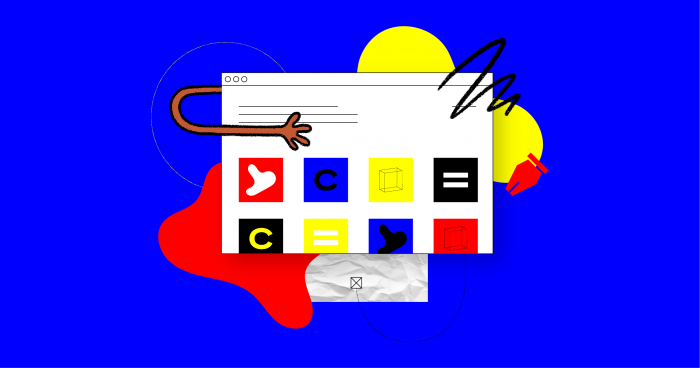In 2015, at the peak of the DTC startup boom, Inc. ran a story about a growing trend in the business world: more and more clients were offering creative agencies equity as partial or total payment for their work. It weighed the pros and cons on both sides of the relationship, citing successes like Red Antler’s investment/brand identity work for mattress brand Casper and Gin Lane’s bet on Harry’s. By now, both brands are household names for anyone who shops at Target. The agencies, too, have gone on to be successful in different ways. For each creative agency, it raised their profile to take a stake in—and not just work for—companies that hit it big.
While it’s hard to know just how much these agencies made from their investments, the paths they’ve taken since indicate a certain amount of freedom. In 2019, Red Antler expanded its brand services empire with Good Moose, a performance marketing agency. That same year, Gin Lane shuttered its branding agency altogether to become a consumer goods brand.
In her 2020 book Obsessed: Building a Brand People Love From Day One, Red Antler co-founder and chief brand officer Emily Heyward emphasizes the importance of taking the time and money to really figure out the look, feel, and personality of a brand before launch. That principle is now so commonly accepted that it’s easy to forget that there was a time not so long ago when branding was thought of as secondary to product. It’s a shift in thinking that’s given creative agencies that specialize in early-stage companies a lot more power than they once had, both in terms of client relationships and overall influence across industries.
Startup culture is predicated on the idea that workers are best incentivized by the opportunity to get in on the proverbial ground floor and, potentially, earn more than a mere salary. Many entry-level and C-suite employees log long hours and years for companies whose compensation packages include equity, and the unguaranteed promise of delayed, post-acquisition gratification. But in the changing power dynamics of today’s work culture, that long-term, high-risk investment, seems less desirable.
It’s funny, then, that the practice of accepting equity as payment only seems to have grown among smaller agencies in recent years. Day Job, a Los Angeles-based studio that branded mainstream successes like Fly by Jing and Recess, describes itself as “a company of designers and developers and writers offering multidisciplinary creative services in exchange for money and sometimes equity.” It was founded in 2018, a year after Alex Ostroff founded St. Urbain, a New York-based branding and design agency that focuses on consumer packaged goods and restaurants. The first time a client asked to pay in equity instead of the agency’s usual fee came a year into his business. Ostroff passed. The project was brand identity for a now-defunct food hall in Manhattan, so the hunch was valuable.
Ostroff didn’t seriously consider equity payment options again until last year, when he was approached by friends in the food world (including Phil Toronto of VaynerFund and Colin Camac, former restauranteur) who were interested in starting an NFT brand for restaurants. Would he be interested in doing the branding in exchange for a partnership? That project became Front of House (FOH), a platform for “Off-Menu Digital Collectibles,” which launched in May. So far, Ostroff is liking the freedom equity provides, despite its risks. “I’m a part-owner of the company, which means that on anything creative, I have 100% say,” Ostroff says. “So, as a selfish creative, that is the most fun to me.”
That’s not the case with all equity deals, of course. As companies grow, more voices weigh in on branding decisions. But even if total creative freedom isn’t on the table, offering, say, 1% in ownership instead of a flat project free makes the relationship between client and agency less transactional and inherently longer-term. In some ways, equity payment for creative agencies is part of a larger trend of decentralization in business culture. On certain corners of LinkedIn, it’s not uncommon to find job titles like “fractional chief marketing officer,” which seems to be a fancy way of saying “consultant.”
An overview of requirements for traditional incubators like Y-Combinator and Techstars will tell you that tech startups often require “technical” founders. But think of the most visible new brands of the past few years. How many of them are actually tech brands? As more startups are less tech-focused and more product-focused, it makes sense that they might want to have a kind of creative co-founder in the form of a creative agency that’s paid in equity. After all, why should the people responsible for creating the foundation of your company (read: a branding agency) be any less committed to its success than your employees?
With all this entrepreneurial spirit in the air, it’s not surprising that some agencies have cut out the middleman and gotten into the business of creating products themselves. In 2019, Gin Lane, whose client list (Warby Parker, Sweetgreen, Quip, Everlane and the aforementioned Harry’s) reads like a millennial DTC starter kit, dissolved its agency and became Pattern. Pattern describes itself as a “multi-brand consumer goods company owned and operated under one roof, with each of its brands working together toward one mission: To help our generation find more enjoyment in daily life.”
So far, Pattern’s in-house offerings haven’t matched the hype of some of Gin Lane’s past clients. Recently, it’s gotten into brand acquisitions. It seems that everyone is doing a little bit of everything these days. In addition to St. Urbain Ventures, an offshoot of his creative agency that Ostroff uses to invest in clients who want to pay for branding work with equity, he’s a partner at Midnight Snack, a brand incubator and creator that offers a full-range of services, from design to ops, financing, and supply chain.
It’s tempting to think that redirecting some of the power away from venture capitalists and private equity and towards creative agencies (or at least more creatively-minded investors) will result in more interesting, less formulaic brands. While a VC firm is more likely to see brand as a means to an end, a creative agency has skin in the game that goes beyond money. It has its reputation to think of, too.
In the coming months, it’s likely that agencies of all sizes will encounter more clients looking to pay with equity, rather than cash. The Federal Reserve has been dramatically increasing interest rates in an effort to slow down spending and ease inflation. For startups, that means less access to ready cash from investors, and more of a need to make something out of nothing.



